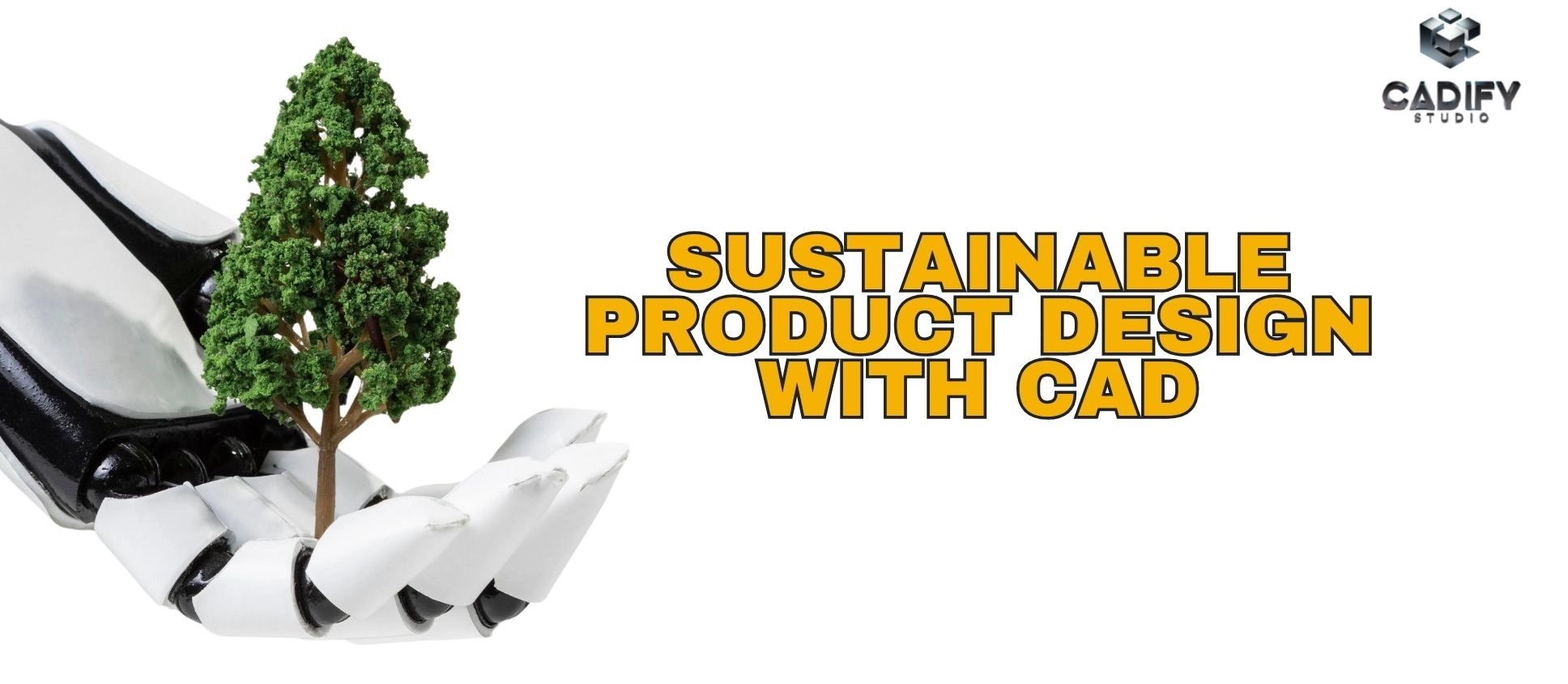Introduction
In today’s fast-paced world of product development, sustainability has emerged as a core focus. Businesses and designers alike are striving to create eco-friendly solutions that minimize environmental impact without compromising innovation or functionality. Sustainable design, paired with Computer-Aided Design (CAD) tools, offers a revolutionary approach to achieving these goals. By harnessing CAD for sustainability, engineers can design products and systems that are not only efficient but also environmentally responsible
What is Sustainable Design?
Sustainable design refers to the practice of creating products, systems, or services that meet human needs while preserving the planet’s resources for future generations. It emphasizes eco-friendly design principles such as:
- Minimizing resource usage
- Reducing waste
- Ensuring product longevity and
Through every phase of a product’s life cycle, Sustainable Product Design with CAD aims to balance economic viability with environmental stewardship, fostering innovation that aligns with global sustainability goals.
Role of CAD in Sustainable Design
CAD tools have become indispensable in sustainable product design. They empower designers to:
- Visualize and simulate design concepts before physical prototyping.
- Optimize material usage to reduce waste and cost.
- Conduct energy performance simulations to ensure energy-efficient designs.
By leveraging CAD tools for green design, industries can streamline workflows, enhance collaboration, and create eco-friendly solutions with greater precision and efficiency.
Key CAD Features Supporting Sustainability
Modern CAD software is equipped with features that directly support sustainable product design with cad practices. Key functionalities include:
- Material Efficiency Analysis: Enables the selection and optimization of sustainable materials.
- Energy Performance Simulation: Tools like CFD (Computational Fluid Dynamics) and FEA (Finite Element Analysis) allow designers to evaluate energy consumption and optimize for efficiency.
- Generative Design: Suggests optimal design configurations to reduce material use and improve performance.
- Virtual Prototypes: Eliminates the need for multiple physical prototypes, saving resources and time.
Sustainable Design Best Practices in CAD
To maximize the potential of Sustainable Product Design with CAD, designers can adopt the following best practices:
- Use recycled materials in 3D modeling to ensure eco-friendly outputs.
- Optimize manufacturing processes with CAD simulations to reduce waste and energy consumption.
- Design for minimal environmental impact by reducing the carbon footprint of products.
- Collaborate with green suppliers to source sustainable materials.
Tools and Software for Sustainable Design
Numerous CAD tools are tailored to support sustainable design initiatives. Some of the most popular options include:
- ArchiCAD’s EcoDesigner STAR: Integrates energy performance analysis within the design process.
- Revit with Insight: Provides tools for optimizing building energy performance.
- SolidWorks Sustainability: Offers life cycle assessment tools for evaluating environmental impact.
- Fusion 360: A versatile platform for sustainable product design.
Case Studies of CAD in Sustainable Design
Automotive Industry
Leading automakers have used sustainable product design with CAD tools to design lightweight, fuel-efficient vehicles that meet strict emission standards.
Construction Sector
Green building designs created with tools like Revit Insight have reduced energy consumption and enhanced resource efficiency.
Manufacturing
CAD-enabled designs have minimized material waste and streamlined production processes, resulting in eco-friendly products.
The Future of Sustainable Design with CAD
The integration of AI into CAD tools is set to revolutionize Sustainable Product Design with CAD. Emerging trends include:
- AI-Driven Design: Facilitates rapid prototyping and iterative improvements.
- Generative Design: Produces innovative, resource-efficient configurations.
- Digital Twin Technology: Enables real-time performance monitoring and optimization throughout a product’s life cycle.
These innovations will further enhance the ability of designers to create eco-friendly solutions, making CAD an essential tool for the green future.
Challenges and Solutions in Sustainable Design with CAD
Despite its advantages, adopting Sustainable Product Design with CAD comes with challenges such as:
- High Initial Costs: Investment in advanced software can be expensive.
- Steep Learning Curves: Mastering sustainable design features requires time and training.
Solutions:
- Utilize open-source or cost-effective CAD tools for startups and small businesses.
- Invest in training programs to upskill designers in using sustainable CAD features.

